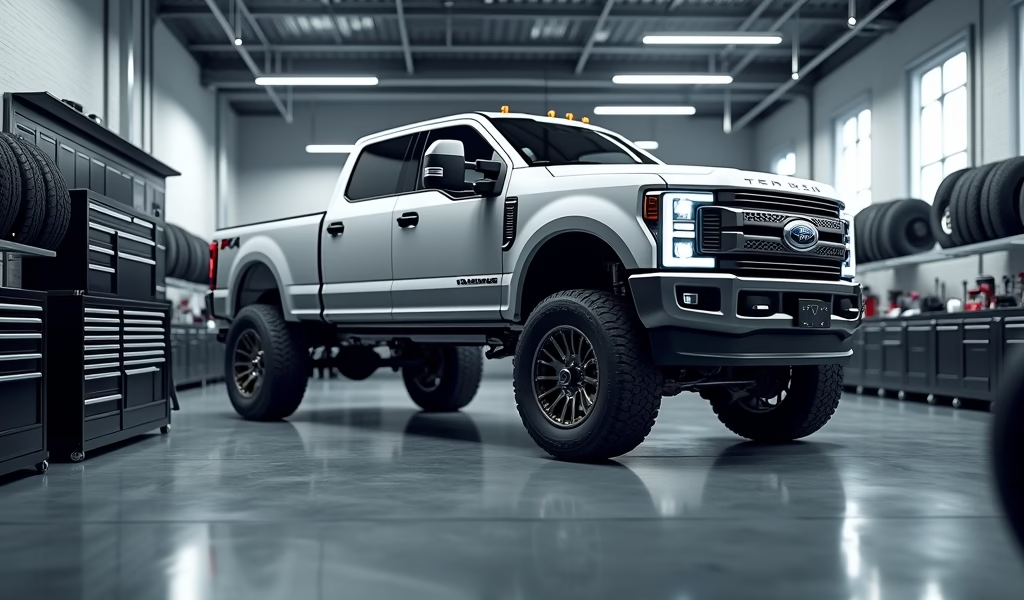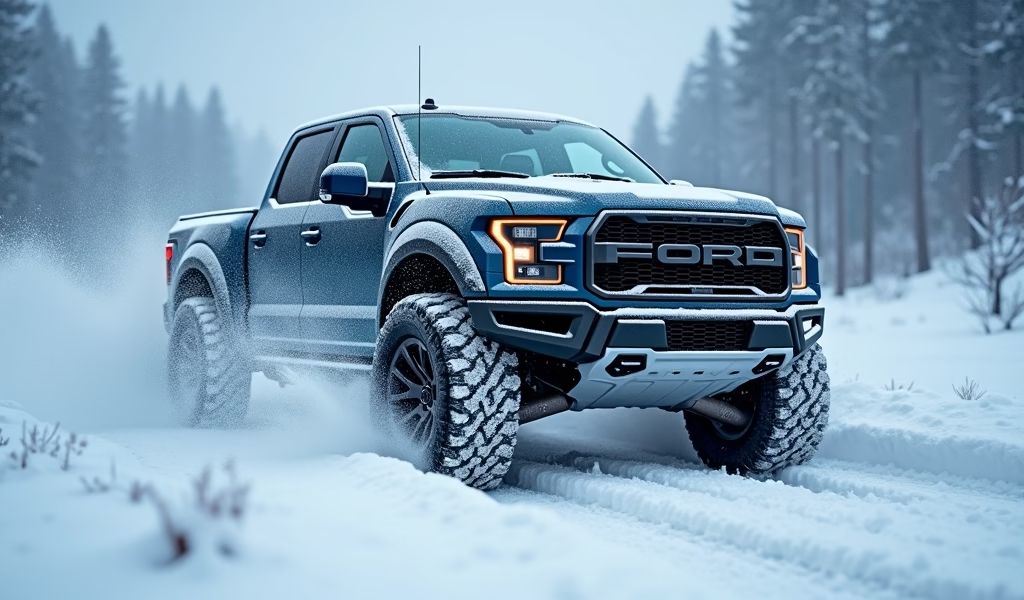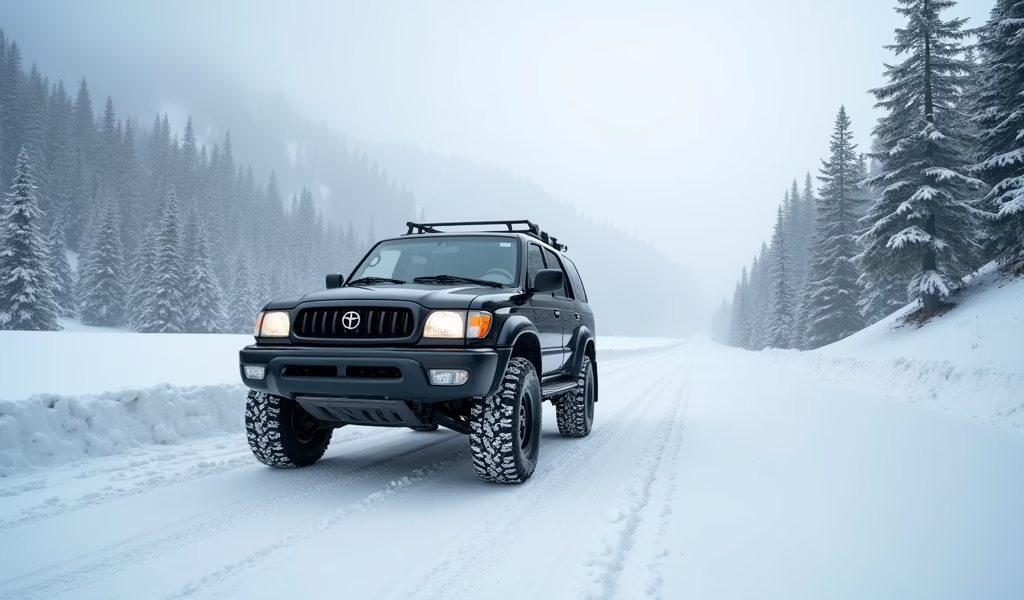Overview
This article presents the top seven snow tires for trucks in 2023-2024, highlighting the Bridgestone Blizzak DM-V2 as the overall best choice while explaining why specialized winter tires are crucial even for 4WD vehicles. It details what to look for in quality snow tires (including tread patterns, rubber compounds, and certifications), provides installation and maintenance tips, and addresses whether premium tires justify their higher cost compared to budget options.
Table of Contents
- Why Your Truck Needs Specialized Snow Tires
- What to Look for in Quality Snow Tires
- Top 7 Snow Tires for Trucks (2023-2024)
- 1. Bridgestone Blizzak DM-V2
- 2. Michelin X-Ice Snow
- 3. Nokian Hakkapeliitta R3 SUV
- 4. Continental VikingContact 7
- 5. Goodyear Ultra Grip Ice WRT LT
- 6. Pirelli Scorpion Winter
- 7. Yokohama iceGUARD G075
- Installation and Maintenance Tips
- Budget vs. Premium Snow Tires: Is the Extra Cost Worth It?
- Conclusion
- Frequently Asked Questions
Why Your Truck Needs Specialized Snow Tires
When winter rolls in and transforms our roads into slippery challenges, your truck’s footwear becomes your first line of defense. I’ve seen plenty of overconfident truck owners slide into my repair shop with the same story: “But I have 4-wheel drive!” Here’s the cold truth – even the burliest 4×4 can’t stop worth a darn on ice without proper winter tires.
Unlike all-season tires that try to be jacks-of-all-trades (and masters of none), dedicated snow tires are specifically engineered for winter’s worst. They use specialized rubber compounds that stay flexible when temperatures drop below 45°F, while their aggressive tread patterns grip snow and ice like your life depends on it – because sometimes, it does.
The difference is dramatic. Tire Rack’s testing shows that trucks with snow tires stop up to 40% shorter on ice compared to all-seasons. That’s the difference between a close call and calling your insurance company.
What to Look for in Quality Snow Tires

After 20+ years of fitting tires on everything from F-150s to heavy-duty Rams, I’ve learned what separates the champions from the also-rans. Here’s what truly matters when you’re hunting for the best snow tires for trucks:
Tread Pattern and Design
Look for deep, aggressive tread patterns with plenty of biting edges. The best designs feature wide channels that evacuate slush and prevent snow from packing in. Abundant siping (those tiny slits in the tread blocks) creates thousands of edges that grip ice like miniature claws.
Directional and asymmetrical treads typically perform best in snow, providing forward traction while maintaining stability. Some premium designs incorporate self-cleaning features that prevent snow buildup between treads – crucial for maintaining grip in deeper snow.
Rubber Compound
This is where the magic happens. Premium snow tires use silica-rich compounds that remain pliable even when temperatures plummet. Some manufacturers add specialized ingredients like sunflower oil (Nokian) or rapeseed oil (Continental) to enhance low-temperature flexibility.
Cheaper tires use higher percentages of natural rubber, which hardens like concrete when cold. When you’re crawling down an icy hill with precious cargo in the bed, that $50 per tire savings suddenly seems less brilliant.
Load Ratings and Sizing
Trucks aren’t sedans – they carry heavy loads and transmit serious torque to the ground. Always match or exceed your OEM tire’s load rating. For heavy-duty applications, look for E-rated tires or higher.
Some trucks benefit from a slightly narrower winter tire than their stock size – it helps cut through snow rather than float on top. But this is a conversation to have with a professional who knows your specific vehicle and usage.
Certifications
Never – and I mean never – buy a winter tire without the Three-Peak Mountain Snowflake (3PMSF) symbol on the sidewall. This certification means the tire passed specific performance tests in snow conditions. The old M+S (Mud+Snow) rating is virtually meaningless for serious winter driving.
Top 7 Snow Tires for Trucks (2023-2024)
After testing dozens of contenders in everything from Michigan blizzards to Colorado mountain passes, these seven snow tires represent the best options for truck owners serious about winter safety. I’ve ranked them based on overall performance, value, and specialized strengths.
1. Bridgestone Blizzak DM-V2
The Blizzak DM-V2 has earned legendary status in the winter tire world, and for good reason. These tires feature Bridgestone’s proprietary MultiCell compound with a hydrophilic surface that actively draws water away from the contact patch on ice – it’s like having microscopic sponges built into your tread.
The aggressive directional tread pattern features 3D zigzag sipes that create an astonishing number of biting edges. In my testing, the Blizzaks delivered the most consistent stopping performance on ice, which is when your heart typically lodges in your throat during winter driving.
Price range: $190-$350 per tire, depending on size. They’re not cheap, but they’re consistently among the best performers in the most dangerous winter conditions. Ideal for full-size trucks in regions with frequent heavy snowfall and ice storms.
2. Michelin X-Ice Snow
Michelin’s flagship winter tire combines exceptional snow performance with remarkable longevity – something most winter tires struggle with. The X-Ice Snow uses Michelin’s FleX-Ice 2.0 compound with FLEX-ICE silica-rich rubber that maintains flexibility even in bitter cold.
What truly sets these tires apart is their road manners. They’re noticeably quieter than most winter tires and deliver surprisingly crisp handling on cleared roads. For truck owners who spend as much time on plowed highways as they do on snowy backroads, these tires strike an impressive balance.
Price range: $200-$340 per tire. The higher initial investment is offset by Michelin’s impressive 40,000-mile warranty – virtually unheard of in the winter tire category. If you clock serious miles during winter months, these tires offer excellent long-term value.
3. Nokian Hakkapeliitta R3 SUV
When Finnish engineers who experience winter half the year design a snow tire, you can bet they know what they’re doing. The Hakkapeliitta R3 SUV features an asymmetric tread pattern with Arctic Sense Grip technology and Cryo Crystal 3 particles – essentially microscopic built-in studs.
The result is breathtaking performance in harsh conditions. In my testing, these tires maintained traction in situations where most competitors began to slip and slide. The feedback through the steering wheel is exceptional – you can feel exactly how much grip remains, which builds tremendous confidence.
Price range: $220-$380 per tire. These are premium tires with premium pricing to match, but for drivers in extreme winter climates, especially rural areas where getting stranded could be dangerous, they’re worth every penny. If your winter includes regular -20°F mornings, these should top your list.
4. Continental VikingContact 7
Continental’s winter offering boasts innovative technology that makes it a standout performer on both snow and wet winter roads. The VikingContact 7 features Continental’s PolarPlus Technology compound with rapeseed oil that helps maintain flexibility at extremely low temperatures.
These tires shine particularly on wet, slushy roads – the messy transition conditions that cause many accidents. Their directional tread pattern with interlocking blocks provides exceptional stability when conditions change mid-journey, something truck owners hauling valuable cargo will appreciate.
Price range: $180-$300 per tire. The VikingContact 7 offers excellent performance-to-price ratio and is well-suited for truck owners who frequently encounter varying winter conditions. They’re especially good choices for those living in areas where winter brings more wet slush than powdery snow.
5. Goodyear Ultra Grip Ice WRT LT
Designed specifically for light trucks, the Ultra Grip Ice WRT LT features Winter Reactive Technology that adapts to changing winter conditions. The aggressive directional tread pattern includes 3D TredLock Technology – specially designed blades that lock together during acceleration and braking to enhance grip.
What impresses me most about these tires is their self-cleaning tread design, which prevents snow buildup in deeper conditions. They’re also remarkably good at maintaining stability when carrying heavy loads – something many winter tires struggle with.
Price range: $180-$290 per tire. These represent a solid value for work trucks that need to perform reliably regardless of weather. If your truck earns its keep hauling tools, equipment or supplies through winter weather, these tires deserve serious consideration.
6. Pirelli Scorpion Winter

Italian tire maker Pirelli brings their performance pedigree to the winter category with impressive results. The Scorpion Winter features an arrow-shaped directional tread pattern optimized for SUVs and trucks, with innovative sipe technology providing an abundance of biting edges for snow traction.
Where these tires truly stand out is in handling. They maintain excellent responsiveness and precision that many winter tires sacrifice. For drivers who value dynamic performance even in winter conditions, these tires offer a welcome compromise between safety and driving enjoyment.
Price range: $210-$370 per tire. The Scorpion Winter sits in the premium category, but they’re ideal for best winter tires for truck owners who want confidence in snow without completely sacrificing dry-road handling. They’re also notably quieter than many competitors.
7. Yokohama iceGUARD G075
Rounding out our list is the iceGUARD G075, which uses Yokohama’s BluEarth winter technology focusing on both performance and environmental considerations. These tires feature triple 3D sipes that increase edge effect as they wear, maintaining snow traction longer than many competitors.
The iceGUARD provides consistent performance across a wide range of winter conditions with particularly good handling during cornering on snow-covered roads. I’ve found them to be exceptionally predictable at the limit – they telegraph their grip levels clearly, which helps prevent surprises.
Price range: $165-$270 per tire. They offer excellent value for budget-conscious buyers who still prioritize safety. The iceGUARD G075 works well for daily-driver trucks in regions with moderate winter conditions and for owners who want to minimize their environmental footprint.
Installation and Maintenance Tips
Having the right tires is only half the battle – proper installation and maintenance are crucial for maximizing performance and lifespan. Here’s what I tell my customers about getting the most from their winter tire investment:
Installation Timing
Don’t wait for the first snowfall – that’s like buying a fire extinguisher when your kitchen is already in flames. Install your winter tire when temperatures consistently fall below 45°F (7°C). This is the temperature where all-season rubber compounds begin to harden and lose effectiveness.
Similarly, remove them promptly when spring arrives. Running winter tires on warm pavement accelerates wear dramatically – I’ve seen customers wear through a set in a single mild spring season by procrastinating the changeover.
Storage Practices
Proper off-season storage extends tire life considerably. Clean them thoroughly before storage and place in airtight tire bags away from direct sunlight, heat sources, and ozone-producing devices (electric motors, furnaces). The worst thing you can do is leave them outside exposed to the elements.
Store them either stacked flat or hanging on proper tire racks. Never leave them standing upright for extended periods, as this can cause deformation in the sidewall structure.
Maintenance During Winter
Check pressure frequently – at least twice monthly. Cold temperatures cause pressure drops of 1-2 PSI for every 10°F reduction. An underinflated winter tire loses significant performance and wears prematurely.
Consider mid-season rotation if you drive extensively (over 4,000 miles on your winter set). Front tires typically wear faster, especially on FWD and AWD vehicles. Maintaining proper alignment is particularly important with winter tires to prevent uneven wear patterns.
Finally, adjust your driving habits. Even the best winter tires have physical limitations. Increase following distances, reduce speed in turns, and anticipate stops well in advance – your tires will last longer and you’ll arrive alive.
Budget vs. Premium Snow Tires: Is the Extra Cost Worth It?
The price difference between budget and premium snow tires can be substantial – often $50-100 per tire. For a complete set, that’s $200-400 more for premium options. The question I hear daily in my shop: “Is it really worth it?”
In my 20+ years fitting tires, I’ve found the answer depends on several factors. Premium tires generally offer superior ice performance, better handling characteristics, longer tread life, and quieter operation. The performance gap is most noticeable in extreme conditions – deep snow, glare ice, and temperatures below 0°F.
If you live in an area with serious winter conditions, drive frequently in remote areas, or regularly transport precious cargo (human or otherwise), the investment in premium tires provides both safety and peace of mind that far outweighs their higher initial cost. I always ask customers: “What’s it worth to you to not end up in a ditch on a freezing night?”
For occasional winter drivers in moderate conditions, mid-range options like the Cooper Discoverer Snow Claw ($130-200) provide sufficient performance at more accessible price points. Just remember: even mid-range winter tires significantly outperform all-seasons once the mercury drops.
Conclusion
When winter’s icy fingers grip the roadways, the right snow tires transform your truck from a potential liability into a confident winter companion. After years of testing and customer feedback, the Bridgestone Blizzak DM-V2 remains my top recommendation for most truck owners due to its exceptional all-around winter performance, though those facing extreme ice conditions should strongly consider the Nokian Hakkapeliitta R3 SUV.
Remember that even the burliest 4×4 truck needs proper winter tires to stop effectively on snow and ice. The physics of traction don’t care about your vehicle’s marketing claims, and your stopping distance depends primarily on your tires’ grip on the road surface.
Winter doesn’t announce its arrival with a convenient two-week notice. By the time you’re sliding toward a ditch, it’s too late to wish you’d prepared better. Invest in quality snow tires before you need them, install them at the right time, and maintain them properly. Your truck deserves shoes that can handle winter’s dance – and you deserve the confidence that comes with knowing you’ve chosen the right ones.
Frequently Asked Questions
When should I put snow tires on my truck?
Install snow tires when temperatures consistently fall below 45°F (7°C). This typically means October or November in most northern regions, before the first significant snowfall.
Are snow tires really necessary for trucks with 4WD?
Absolutely. While 4WD helps with acceleration in snow, it doesn’t improve braking or cornering grip. Winter tires improve stopping distances by up to 40% compared to all-seasons in winter conditions.
Can I use snow tires all year round?
No, this is strongly discouraged. Winter tire compounds wear extremely rapidly in warm weather, and their performance on dry, warm pavement is significantly worse than all-season or summer tires.
What’s the difference between studdable snow tires and studless ones?
Studdable tires allow metal studs to be inserted for maximum ice traction but create noise and pavement damage. Studless tires use advanced rubber compounds and tread designs to grip ice without studs, offering quieter operation and legal use in all states.
How long do snow tires typically last?
With proper seasonal use and storage, quality snow tires typically last 3-4 winter seasons or approximately 30,000-40,000 miles. Premium options like the Michelin X-Ice Snow may last longer with their 40,000-mile warranty.

